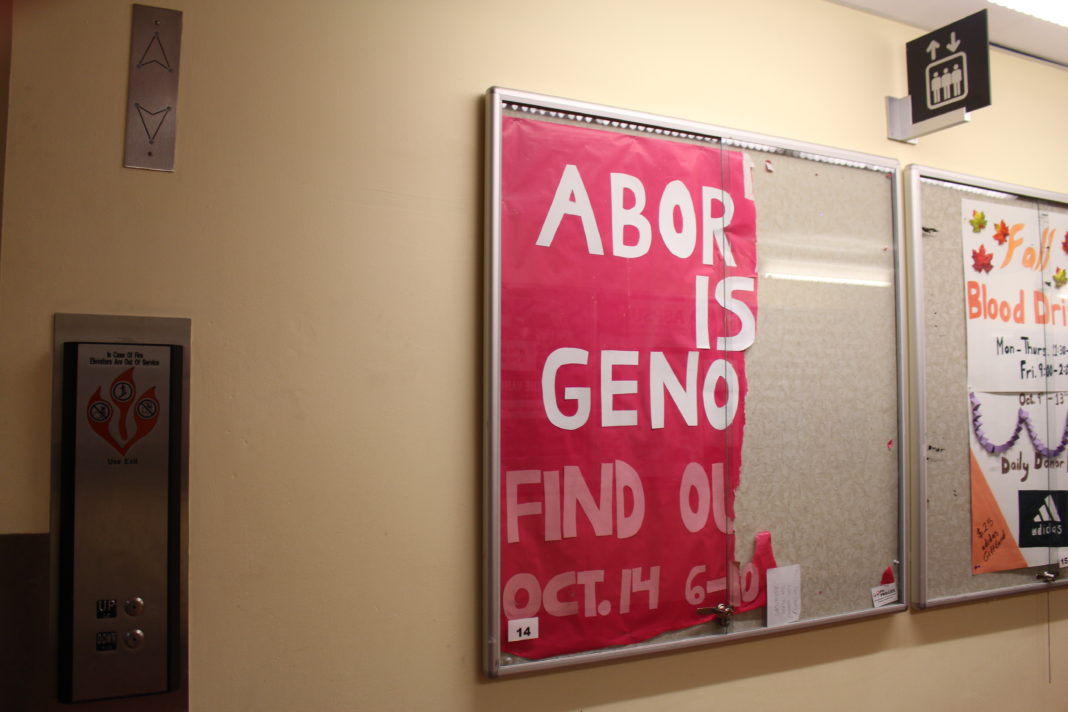College students often indulge in the advantages of youth. Whether it’s eating whole pizzas, drinking in excess or having multiple sexual partners, students often don’t think of the consequences of instant gratification. Stomach aches and hangovers are one pitfall, but unsafe sex is a disaster waiting to happen.
Sexually transmitted diseases
College students often indulge in the advantages of youth. Whether it’s eating whole pizzas, drinking in excess or having multiple sexual partners, students often don’t think of the consequences of instant gratification. Stomach aches and hangovers are one pitfall, but unsafe sex is a disaster waiting to happen.
Unplanned pregnancy is one result of unsafe sex, but add disease and infection, and having unsafe sex is a risk you simply don’t want to take.
Due to advances in treatment and screenings, many sexually transmitted diseases are now referred to as sexually transmitted infections. Regardless of what they’re called, statistics show Portland’s free-spirited sexual lifestyles can hold serious consequences.
Chlamydia
Chlamydia is a bacterial infection that affects the reproductive system and can even affect the throat or eyes. Symptoms include painful urination, discharge from the vagina or penis, testicular pain and pain during sexual intercourse. Treatment is relatively simple: antibiotics. If left untreated, a chlamydia infection can lead to more serious diseases, ectopic pregnancies, sterility or reduced fertility and long-term pain.
According to Multnomah County’s most recent STD-HIV report, chlamydia was the most frequently reported STD in 2010, with reported cases of 486 per 100,000 residents. This troubling data points to a young demographic of females ages 15–24 years, which parallels the national rate.
The report cites that the higher rates of infected females versus infected males may be due to more women being screened. The Oregon Department of Human Services stated that 3/4 of women and half of men who have been infected have no symptoms that would prompt early care.
The count of infected males was fewer than half of the nearly 4,000 women who have the infection. Of that count, African Americans had almost three times the amount of infections as Whites and Hispanics.
Mark Bajorek is the director of Health Services at Portland State. He understands how complicated demographics for these infections can be at PSU.
“The tricky piece is thinking about demographics for 20,000 to 30,000 students,” Bajoerek said. “At times there are cluster phenomena. One patient with chlamydia might have two to 10 partners in a six-month period. This radically changes our statistics, especially if the individual is having sexual contact with an under-represented minority.”
Gonorrhea
Gonorrhea is more commonly known by its other name—“the clap”—and often goes hand-in-hand with chlamydia. It is another kind of bacterial infection that affects the reproductive system and, like chlamydia, can affect the throat and eyes and even the skin. Symptoms mirror those of chlamydia, but the discharge is often thicker and may contain blood. Gonorrhea is treated with antibiotics. Left untreated, the infection can result in sterility, long-term pain and ectopic pregnancies.
Multnomah County reported that the highest rates for gonorrhea were among males 20–24 and females 15–19 years old. This was consistent for every age category except ages 19 and under. The number of cases of gonorrhea also reflected national demographic rates, which showed consistently higher numbers of infections among African Americans than other ethnic groups.
Multnomah County Health Department hopes to curb the disparities in African American infection rates with sexual health programs highlighting community outreach and screenings.
Syphilis
Another kind of bacterial infection, syphilis, affects the reproductive system, the skin, mucus membranes and even the brain and the heart. Syphilis symptoms occur in phases, but many often go unnoticed or even disappear completely. Syphilis causes flu-like symptoms, including fever, fatigue and soreness. It can manifest on the genitals and skin in the form of a rash that looks like spots marked by copper pennies. Syphilis infections are treated with antibiotics.
The Multnomah County report states that “syphilis is easy to cure in its early stages but may be difficult to diagnose. Left untreated, syphilis can lead to serious, long-term health problems such as dementia, blindness and even death.”
In 2010 almost no women in Multnomah County were reported with syphilis, and all of the nearly 80 cases were in men who have sex with other men. Of that figure, 50 percent were also infected with HIV.
HIV/AIDS
The Human Immunodeficiency Virus affects the immune system and is the precursor to full-blown AIDS. HIV can cause flu-like symptoms, but often those infected show no symptoms at all. As the infection progresses, the symptoms get worse. There’s no cure for HIV/AIDS, but there are medical regimens that can help suppress the growth of the virus.
The rate of HIV in the Portland area has remained consistent for the last 10 years. In 2000, 145 people were infected, representing 22 per 100,000 residents. Ten years later, the number of cases dropped to 109 and represented 15 people per 100,000. African American diagnoses were the highest until a drop in 2006, but then subsequently soared in 2008 to the highest rate in 10 years, representing 45 infected people per 100,000. In 2010, Hispanics had a higher rate of infection than any other demographic group.
“Every year, we screen nearly 1,000 students for HIV—usually there are two to five students who are positive. We offer psychological support at [the Center for Student Health and Counceling] and make sure that the student is linked with medical resources and community resources. Appropriate treatment of HIV disease requires specialist attention to the current state of treatment of patients with antivirals,” Bajorek said.
Of all cases of HIV/AIDS in the Portland area, 88.7 percent are in men.
HPV
Bajorek states the Human Papilloma Virus is the most common STD for all college-age students, including PSU’s student population. There are more than 40 strands of HPV, and many manifest in the form of genital warts. In the last decade, scientists have linked some strands to cervical cancer and developed a vaccine for those strands. The Center for Disease Control recommends that girls under the age of 26 receive the vaccination.
There are more than 10 types of STDs, many of which carry similar symptoms, so it’s important that you get an STD screening if you start feeling symptomatic.
PSU’s SHAC offers STD testing and offers treatments for many STDs, including gonorrhea, chlamydia, herpes, syphilis and HPV. For most of these diseases, the treatment is less than $10. The HPV vaccination for women is fully covered by the student insurance plan. Additionally, both SHAC and the Queer Resource Center offer free condoms.
For students who may be struggling with an STD, Bajorek offers this: “Please come in—we’re here to help you and not to judge you. If we don’t have the answer, we will know where to find the answer.”
But aside from all of this, be informed. Have protected sex.




